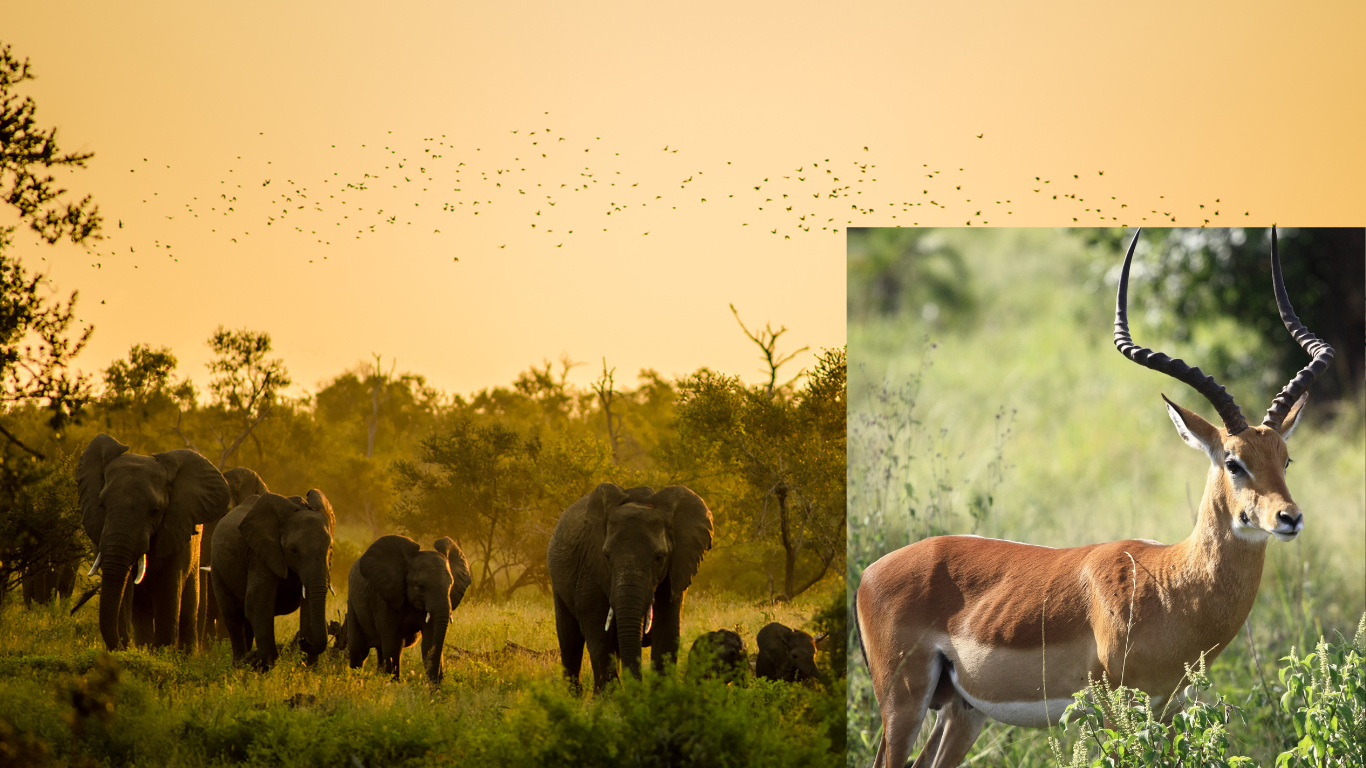Step into a world where the air hums with the songs of rare birds, where vibrant wildflowers paint the landscape, and where every rustling leaf whispers tales of survival and rebirth. Biodiversity parks are not just patches of green—they’re pulsating sanctuaries of life, where nature’s grand symphony plays out in vivid detail. These ecological marvels are humanity’s bold stand against the tide of extinction, climate change, and urban sprawl. In this thrilling 3000-word journey, we’ll dive deep into the heart of biodiversity parks, uncovering their magic, their mission, and their transformative power. Whether you’re a nature lover in India, an urban explorer in the USA, or a global traveler seeking eco-adventures, this guide will ignite your passion for these guardians of Earth’s diversity.
What Is a Biodiversity Park?
Imagine a living museum where every plant, animal, and microorganism is a masterpiece, carefully curated to thrive and tell the story of its ecosystem. A biodiversity park is exactly that—a meticulously designed haven dedicated to conserving, restoring, and celebrating the staggering variety of life on our planet. Unlike recreational parks with manicured lawns, biodiversity parks prioritize ecological integrity, protecting native species, reviving degraded habitats, and educating visitors about the delicate balance of nature.
These parks are often established in areas rich in native biodiversity or on lands crying out for restoration, such as polluted riverbanks or abandoned quarries. From the lush wetlands of the Yamuna Biodiversity Park in Delhi, India, to the urban oasis of the High Line in New York City, USA, each park is a unique tapestry of ecosystems—forests, grasslands, wetlands, or urban gardens—woven together to support life in all its forms.
Why Are Biodiversity Parks Absolutely Thrilling?
Close your eyes and picture a single park buzzing with over a thousand species: delicate orchids swaying in the breeze, elusive leopards prowling silently, and flocks of migratory birds painting the sky. Biodiversity parks are nature’s blockbuster movies, where every day brings new scenes of survival, adaptation, and beauty. They’re places where endangered species stage daring comebacks, where barren lands are reborn as vibrant ecosystems, and where humans rediscover their connection to the wild. Their impact—saving species, cooling cities, and inspiring millions—makes them nothing short of electrifying.
Why Biodiversity Parks Matter: A Lifeline for Our Planet
Biodiversity is the heartbeat of Earth, sustaining everything from the oxygen we breathe to the crops we eat. Yet, the World Wildlife Fund’s 2020 Living Planet Report warns that global wildlife populations have plummeted by 68% since 1970. Biodiversity parks are our counterattack, offering hope and action in the face of this crisis. Here’s why they’re indispensable:
1. Sanctuaries for Native Species
Biodiversity parks are fortresses for native plants and animals facing extinction. By preserving genetic diversity, Rosy’s Story: The Indian Roller’s Triumph in Aravalli
In the Aravalli Biodiversity Park, the Indian roller—a dazzling blue-and-orange bird—was once a rare sight due to habitat loss. Through reforestation and predator control, the park’s team created safe nesting sites. Today, visitors gasp as these vibrant birds soar across the skies, a living testament to the park’s success.
2. Rebirth of Ecosystems
From desolate wastelands to thriving ecosystems, biodiversity parks work miracles. They restore degraded lands through reforestation, soil enrichment, and water management, creating habitats where life can flourish again.
Example: Yamuna Biodiversity Park’s Wetland Wonder
Once a polluted floodplain along Delhi’s Yamuna River, this 457-acre park now teems with over 1,200 plant species and 200 bird species. Its wetlands, revived through careful water management, attract flamingos and herons, turning a wasteland into a birdwatcher’s paradise.
3. Warriors Against Climate Change
Biodiversity parks are climate superheroes, sequestering carbon and cooling their surroundings. Their forests and wetlands act as carbon sinks, while diverse vegetation stabilizes local climates. Research shows urban biodiversity parks can reduce city temperatures by up to 5°C, fighting the urban heat island effect.
Example: High Line’s Urban Cooling
In New York City, the High Line’s native plantings not only attract pollinators but also lower summer temperatures, offering relief to sweltering urbanites strolling its elevated pathways.
4. Outdoor Classrooms for All
Biodiversity parks are gateways to learning, with guided tours, workshops, and interpretive centers that spark curiosity and inspire action. They transform visitors into eco-champions, young and old.
Example: Eden Project’s Biome Adventure
In Cornwall, UK, the Eden Project’s massive biomes immerse visitors in rainforests and Mediterranean landscapes, teaching sustainable living through interactive exhibits that captivate schoolkids and adults alike.
5. Boosting Pollinators and Food Security
Pollinators like bees and butterflies, vital for 75% of global food crops, find refuge in biodiversity parks. By supporting these species, parks bolster agriculture and food systems.
Example: Singapore Botanic Gardens’ Pollinator Haven
This UNESCO site’s orchid gardens and rainforest zones buzz with pollinators, ensuring nearby farms thrive while delighting visitors with bursts of color.
6. Healing Hearts and Minds
Beyond ecology, biodiversity parks offer spaces for recreation, reflection, and cultural connection. They boost mental health and foster community bonds, reminding us of nature’s nurturing power.
Example: High Line’s Urban Sanctuary
New Yorkers find solace amidst the High Line’s wildflowers and art installations, a green escape from the concrete jungle that soothes the soul.
A World Tour of Biodiversity Parks: Epic Stories of Revival
Let’s embark on a global adventure to explore five iconic biodiversity parks, each a beacon of hope and ingenuity.
1. Yamuna Biodiversity Park, Delhi, India
This 457-acre marvel transformed a toxic floodplain into a thriving ecosystem. Its butterfly conservatory dazzles with over 50 species, while its medicinal plant garden preserves India’s herbal heritage. Guided tours reveal stories of herons and kingfishers reclaiming the wetlands.
2. Aravalli Biodiversity Park, Gurgaon, India
Once a scarred mining site, this 692-acre park now bursts with native trees and wildlife like the Indian leopard. Hikers along its trails spot golden jackals, while researchers study its role in groundwater recharge.
3. Eden Project, Cornwall, United Kingdom
With its futuristic biomes, the Eden Project is a global icon. Visitors wander through steamy rainforests and arid deserts, learning how biodiversity sustains human survival. Its seed bank protects rare plants for future generations.
4. Singapore Botanic Gardens, Singapore
A UNESCO World Heritage Site, this urban gem blends conservation with beauty. Its National Orchid Garden showcases over 1,000 orchid species, while its rainforest trail immerses visitors in primal wilderness.
5. High Line, New York City, USA
Built on an abandoned railway, this urban park proves cities can embrace nature. Native grasses attract monarch butterflies, and public programs—from stargazing to yoga—engage diverse communities.
Crafting a Biodiversity Park: A Labor of Love
Creating a biodiversity park is like composing a symphony, blending science, vision, and community spirit. Here’s how it happens:
1. Choosing the Stage
Experts select sites with ecological potential—degraded lands, riverbanks, or urban edges. Soil, water, and biodiversity assessments guide the process.
2. Reading the Land
Surveys identify native species, invasive threats, and environmental challenges, shaping restoration plans.
3. Breathing Life Back
Degraded soils are enriched, invasives removed, and native plants introduced. Wetlands or forests are sculpted to mirror natural systems.
4. Building for Visitors
Sustainable trails, observation decks, and interpretive centers enhance access without harming ecosystems.
5. Rallying the Community
Locals join planting drives and citizen science, fostering ownership and pride.
6. Keeping Watch
Ongoing monitoring tracks species, water quality, and ecosystem health, with adaptive strategies to stay resilient.
Example: Aravalli’s Quarry-to-Oasis Journey
Miners left the Aravalli hills barren, but ecologists planted 200 native species, restored water tables, and built trails. Today, it’s a thriving habitat and a model for global restoration.
The Science That Powers Biodiversity Parks
Biodiversity parks are laboratories of ecological science, harnessing concepts like succession (how ecosystems evolve), keystone species (like beavers shaping wetlands), and trophic cascades (where predators balance food webs). Technologies like GIS mapping and drone surveys track progress, while citizen science apps like iNaturalist turn visitors into researchers.
Example: Yamuna’s Tech-Savvy Conservation
Drones monitor wetland health at Yamuna Biodiversity Park, while iNaturalist records from visitors have identified rare dragonflies, fueling global biodiversity databases.
Challenges: The Battle for Survival
Biodiversity parks face daunting obstacles:
1. Funding Fights
Massive investments are needed, but government and private support can be sporadic.
2. Urban Encroachment
Cities threaten parks with pollution and development. Balancing growth and conservation is a tightrope walk.
3. Invasive Invaders
Non-native species like Prosopis juliflora in Aravalli outcompete natives, demanding constant vigilance.
4. Climate Chaos
Rising temperatures and erratic weather challenge species and ecosystems. Resilient planting and water strategies are critical.
5. Awareness Gaps
Many remain unaware of biodiversity’s value. Parks must amplify outreach to inspire action.
Example: High Line’s Pollution Struggle
New York’s High Line battles air pollution from nearby traffic, requiring hardy plants and innovative designs to maintain its ecological edge.
How You Can Be a Biodiversity Hero
Biodiversity parks need your passion. Here’s how to join the movement:
1. Explore and Learn
Visit parks, join tours, and soak up knowledge. Your presence fuels their mission.
2. Get Your Hands Dirty
Volunteer for planting or monitoring. Your sweat builds ecosystems.
3. Amplify the Message
Share park stories on social media with #BiodiversityPark. Inspire others to care.
4. Push for Change
Advocate for green policies. Write to leaders or join campaigns.
5. Live Green
Cut waste, save water, and plant natives at home. Every act counts.
Tips for Visiting a Biodiversity Park: For India, USA, and Travelers
Ready to dive into a biodiversity park? Whether you’re in India, the USA, or traveling the globe, these tips ensure an epic, eco-friendly adventure:
- Plan Like a Pro: Check park websites for rules and events. In India, Yamuna Biodiversity Park requires tour bookings; in the USA, the High Line has free entry but limited hours. Travelers, confirm visa needs and local customs for international parks.
- Dress for the Wild: India’s Aravalli park can be scorching—wear breathable clothes, hats, and sunscreen. The High Line’s winter chill demands layers. Travelers, pack rain gear for India’s monsoons or versatile layers for unpredictable climates.
- Gear Up for Adventure: Bring binoculars for spotting Yamuna’s migratory birds or High Line’s butterflies. A camera captures Aravalli’s wildflowers. Travelers, carry a universal adapter for charging gear abroad.
- Tread Lightly: Stick to trails to protect sensitive species like India’s monitor lizards or the USA’s monarchs. Travelers, resist picking plants or feeding wildlife, as ecosystems differ globally.
- Dive into Learning: Join Yamuna’s medicinal plant workshops, Aravalli’s butterfly tours, or High Line’s ecology talks. Travelers, check event schedules for unique programs to enrich your visit.
Example: A Traveler’s Yamuna Adventure
A Canadian visitor to Yamuna Biodiversity Park booked a sunrise tour, spotting flamingos and learning about Ayurvedic plants. With binoculars and a reusable bottle, they left inspired, sharing photos on Instagram to spread the word.
The Future: A New Dawn for Biodiversity Parks
Biodiversity parks are poised to shape a sustainable future. By 2030, the UN aims to protect 30% of Earth’s land and oceans, with parks leading the charge. Exciting trends include:
- Smart Parks: IoT sensors and AI monitor ecosystems in real-time.
- Urban Green Waves: Rooftop gardens and vertical forests bring biodiversity to cities.
- Global Unity: Networks like the IUCN’s Green List share data and strategies.
- Inclusive Voices: Indigenous and youth leadership ensures diverse perspectives.
Example: Singapore’s Smart Gardens
The Singapore Botanic Gardens uses sensors to track soil moisture, optimizing irrigation and setting a global standard for tech-driven conservation.
Conclusion: Your Role in Nature’s Epic Saga
Biodiversity parks are Earth’s beating heart, where species thrive, lands heal, and humans find purpose. From Yamuna’s wetlands to the High Line’s urban blooms, they weave a story of resilience and hope. This 3000-word odyssey has shown their power to save species, fight climate change, and inspire millions. But their saga depends on you.
Take action today—visit a park, volunteer, or share this guide with #BiodiversityPark. Every step you take strengthens these sanctuaries, ensuring they flourish for generations. Let’s write the next chapter together, celebrating the thrilling, life-giving magic of biodiversity parks.




